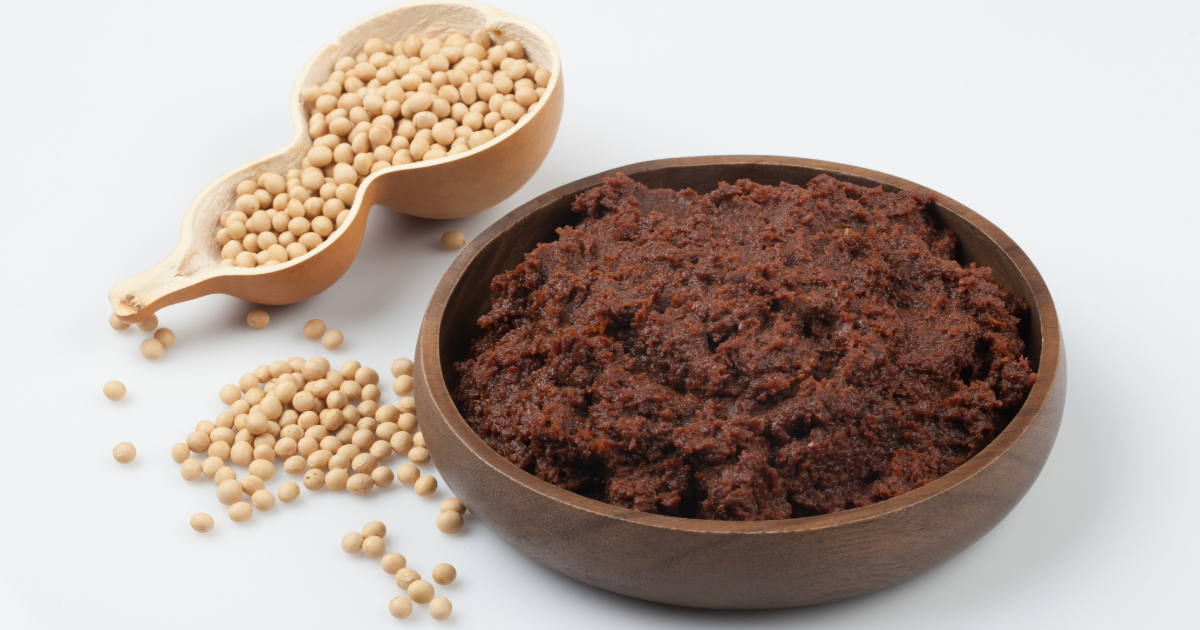Soybean paste, also known as doenjang in Korean cuisine, is a versatile and flavorful ingredient that has been used for centuries.

Made from fermented soybeans, salt, and often other grains like rice or wheat, it adds a rich, savory depth to various dishes.
If you've come across this pungent paste and are wondering how to incorporate it into your cooking, you've come to the right place.
Soups and Stews
One of the most common and beloved uses for soybean paste is in soups and stews. The paste serves as a base for imparting a deep, umami flavor to these comforting dishes.
Doenjang Jjigae (Soybean Paste Stew)
Doenjang Jjigae, or soybean paste stew, is a classic Korean dish that showcases the versatility of this ingredient. The stew typically includes beef, vegetables like zucchini, mushrooms, and onions, and a generous amount of doenjang. It's a hearty and satisfying meal that can be easily customized with your favorite proteins and veggies.
Baechu Doenjang Guk (Cabbage Soybean Paste Soup)
Another popular option is Baechu Doenjang Guk, a cabbage soybean paste soup. This light yet flavorful soup is often enjoyed as a side dish or a quick meal. It's made with cabbage, doenjang, and sometimes includes slices of beef or pork for added protein.
Key Takeaway: Soybean paste is an essential ingredient in many Korean soups and stews, lending them a rich, umami flavor.
Marinades and Dressings
Beyond soups and stews, soybean paste can also be used to create flavorful marinades and dressings for meats, vegetables, and salads.
Maekjeok (Grilled Pork Skewers)
Maekjeok, or grilled pork skewers, is a popular Korean dish where pork is marinated in a mixture of soybean paste, garlic, sugar, and other seasonings. The paste helps tenderize the meat and adds a delicious savory note.
Ssamjang (Dipping Sauce)
Ssamjang is a Korean dipping sauce made with a combination of doenjang, gochujang (red chili paste), garlic, sesame oil, and sometimes a sweetener like honey or sugar. It's commonly served as a condiment for ssam (Korean lettuce wraps) or as a dipping sauce for grilled meats and vegetables.
Banchan (Side Dishes)
Soybean paste is also a key ingredient in many Korean banchan, or side dishes, which are an integral part of the traditional Korean meal.
Cheonggyeongchae Doenjang Muchim (Seasoned Bok Choy)
One popular banchan is Cheonggyeongchae Doenjang Muchim, which involves seasoning bok choy with soybean paste, garlic, sesame seeds, and sometimes a touch of sweetener like honey or sugar.
Myeongaju Muchim (Lamb's Quarters Side Dish)
Another tasty option is Myeongaju Muchim, a side dish made with lamb's quarters (a type of wild green) tossed in a soybean paste dressing along with garlic, sesame oil, and other seasonings.
Unique Recipes
Soybean paste can also be used in more unique and creative ways, adding depth and complexity to various dishes.
Jokbal (Braised Pig's Trotters)
Jokbal, a popular Korean dish, features pig's trotters (feet) that are braised in a flavorful sauce made with soybean paste, rice wine, garlic, and other spices. The paste helps tenderize the meat and infuses it with a rich, savory flavor.
Kkotgetang (Korean Crab Stew)
Kkotgetang, or Korean crab stew, is a delicious and comforting dish that incorporates soybean paste into its broth along with ginger, garlic, and a variety of vegetables. The paste adds a depth of flavor that perfectly complements the sweet crab meat.
Key Takeaway: Soybean paste can be used in marinades, dressings, and banchan (side dishes), adding a savory depth of flavor to various preparations.
FAQs
How long does soybean paste last?
Properly stored, soybean paste can last for several months, or even up to a year in the refrigerator. It's important to keep it tightly sealed and refrigerated to prevent spoilage.
Can soybean paste be substituted with miso?
While soybean paste and miso are both fermented soybean products, they have distinct flavors and are not always interchangeable. Miso tends to have a milder, sweeter flavor, while soybean paste has a more pungent and salty taste. Substitutions should be made cautiously and may require adjustments to other ingredients.
Is soybean paste gluten-free?
Traditional Korean soybean paste (doenjang) is typically made from fermented soybeans and salt, making it naturally gluten-free. However, it's always a good idea to check the ingredient labels, as some commercial products may contain added wheat or other gluten-containing ingredients.
How do I incorporate soybean paste into my cooking if I'm not familiar with Korean cuisine?
Soybean paste can be a versatile addition to various dishes, even if you're not familiar with Korean cuisine. Start by adding a small amount to soups, stews, marinades, or dressings, and adjust the quantity to suit your taste preferences. You can also experiment with incorporating it into dishes like meatballs, burgers, or vegetable stir-fries for added depth of flavor.
Conclusion
Soybean paste is a powerful ingredient that can elevate the flavor profile of many dishes.
From traditional Korean stews and soups to marinades, dressings, and unique preparations, the possibilities are endless.

